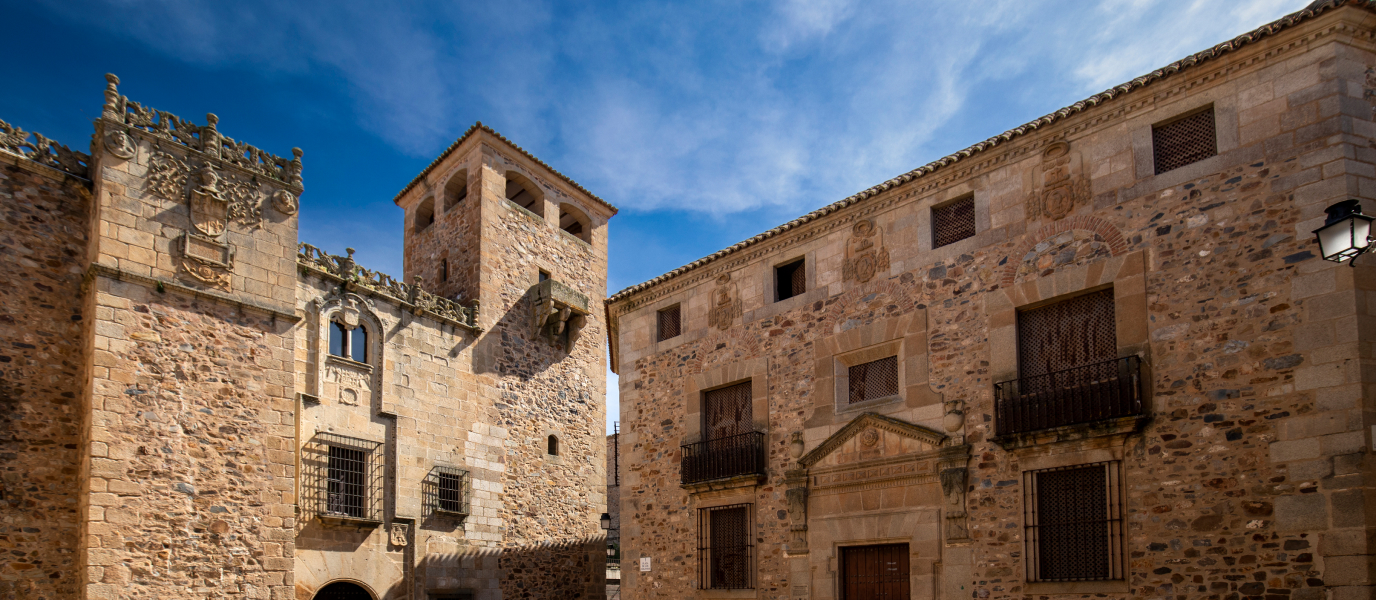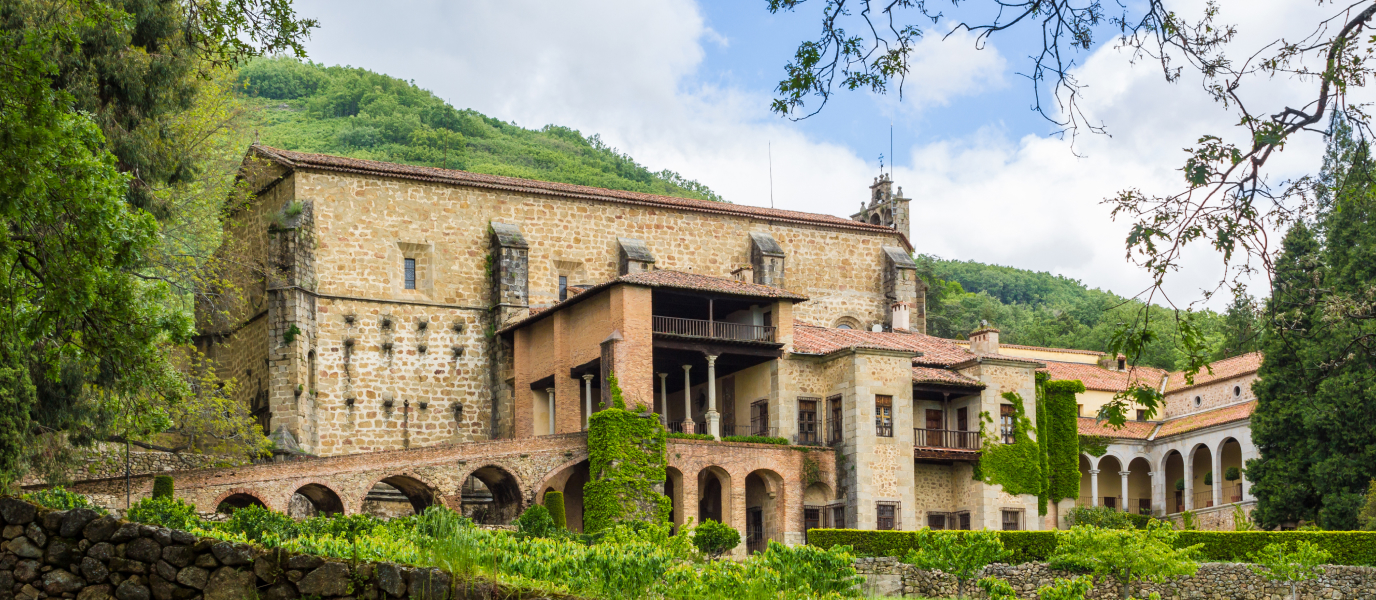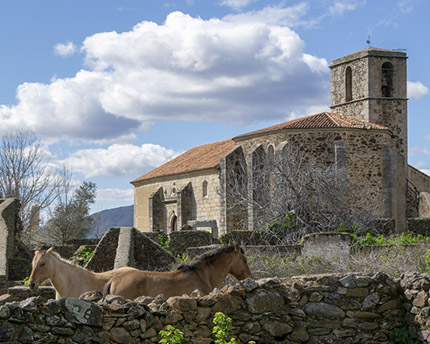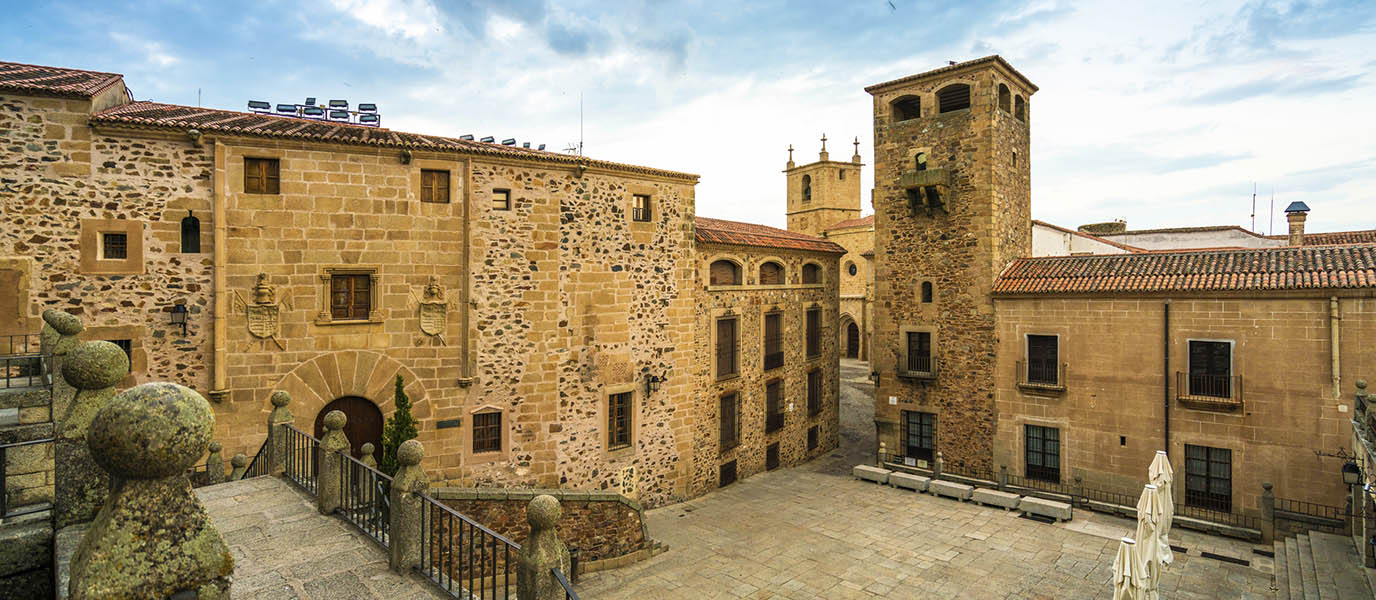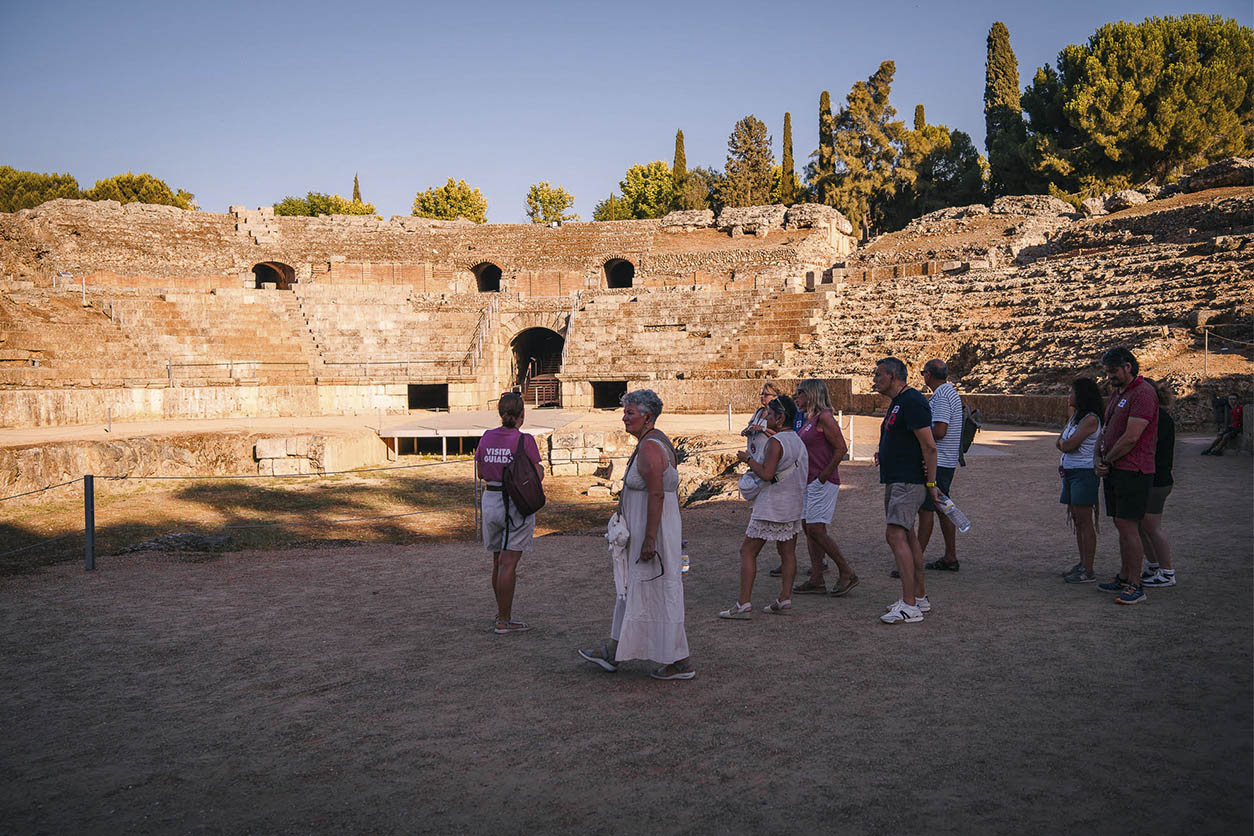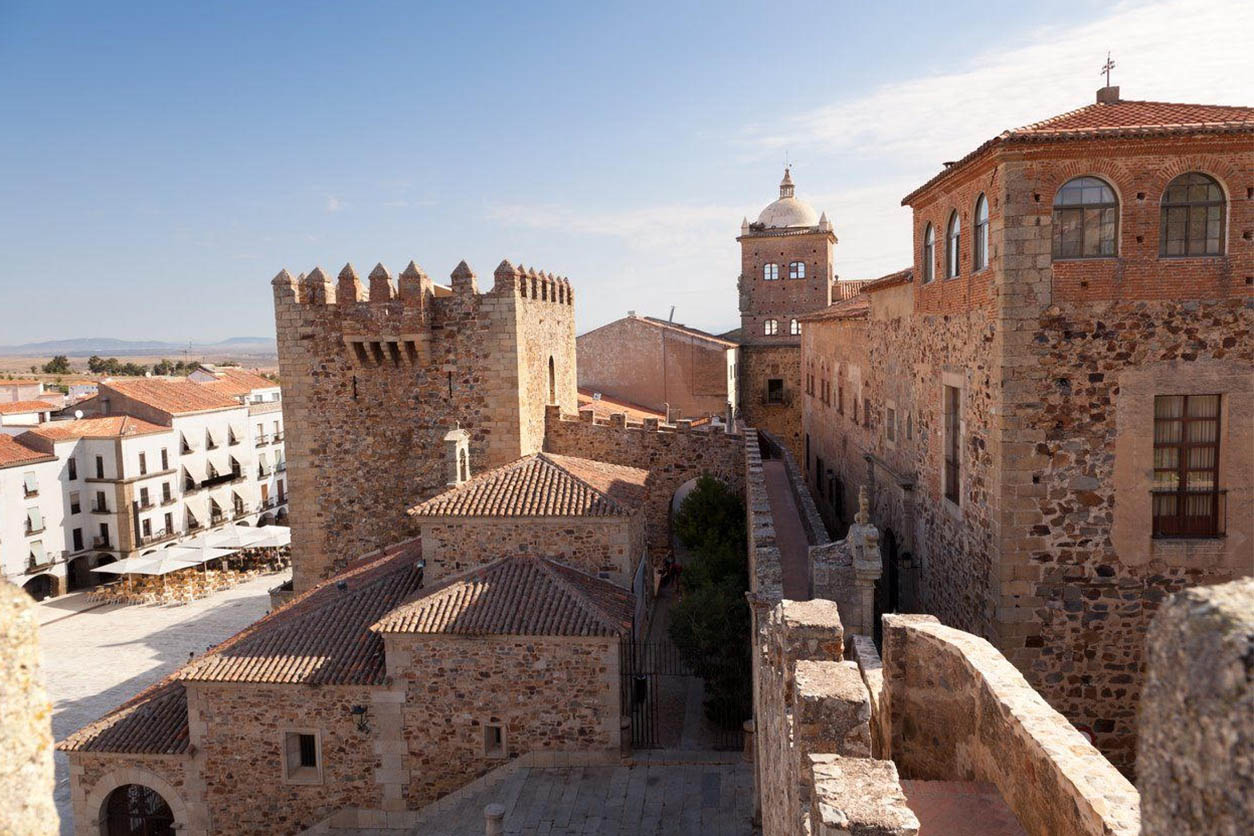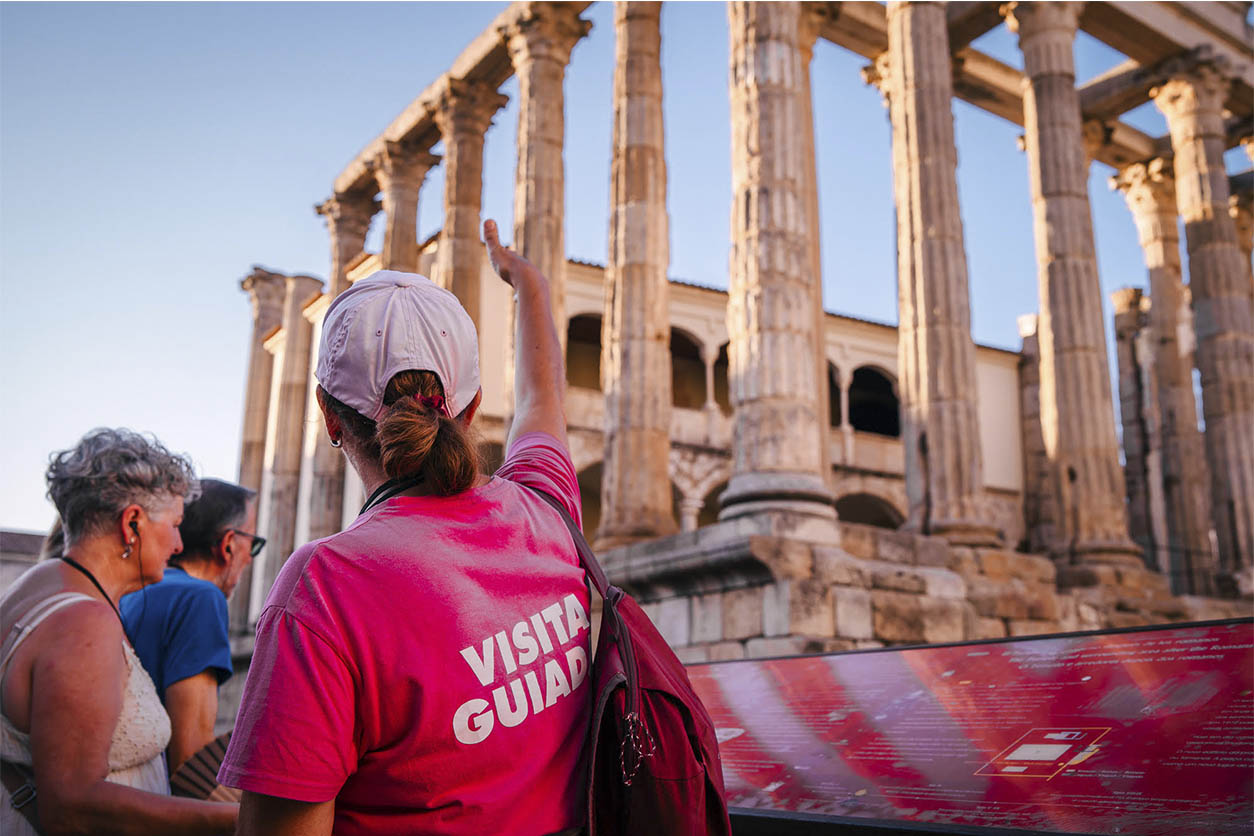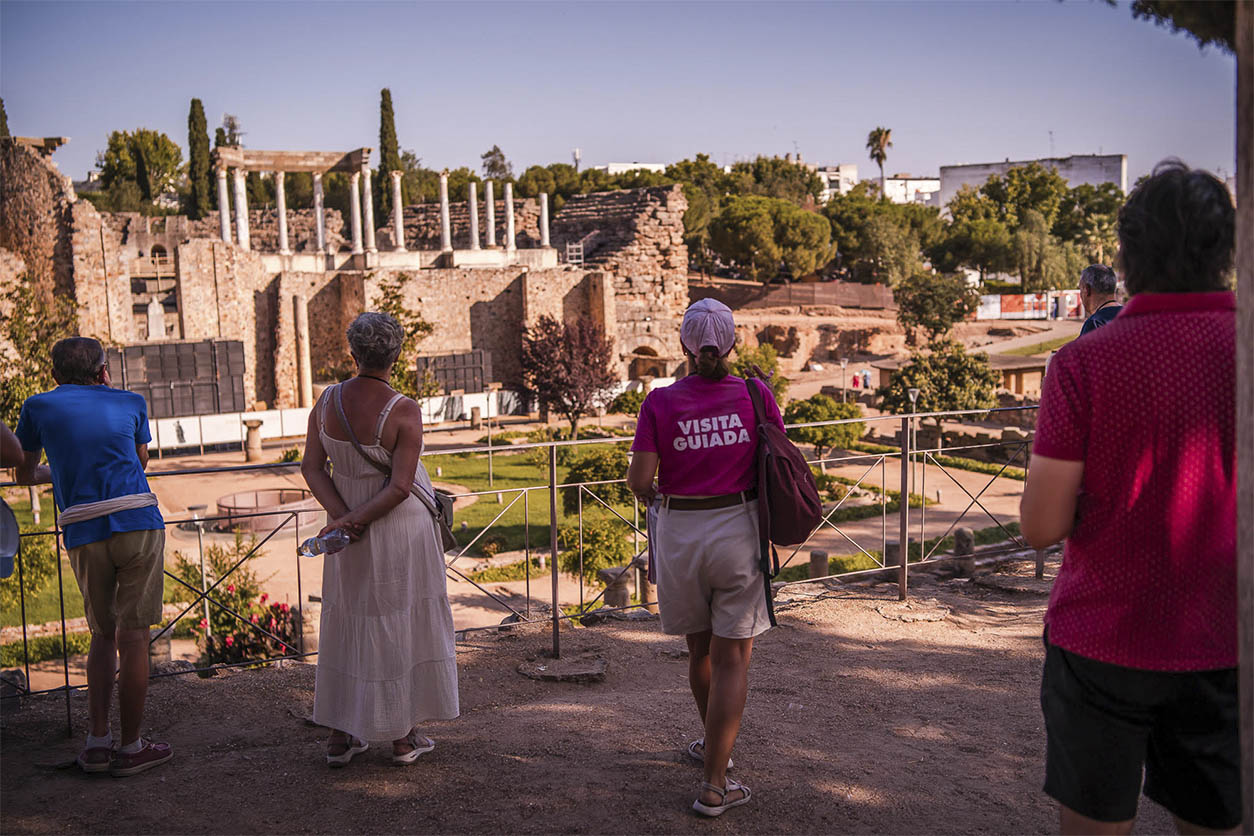The Old Town of Cáceres, which was declared a UNESCO Heritage Site in 1986, harbours two outstanding medieval palaces that share one common denominator: the family name Golfines. The Palacio de los Golfines de Arriba is located at the highest point of the Old Town, while Palacio de los Golfines de Abajo is located in the lowest point, at Plaza de Santa María. The construction of this lavish, 15th-century palace was commissioned by one of the most powerful families of Extremadura and its sumptuous Plateresque façade is one of the most stunning of the entire province.
The palace served as the Golfín’s private residence for 500 years before it was reopened as a museum in 2015. The guided tours provide a unique glimpse of aristocratic life in medieval Spain. The museum also houses an impressive treasure trove of artistic and documentary items from across the 14th century and 20th centuries.
When the palace first opened its doors, it provided a unique glimpse at aristocratic life in centuries past.
The legend of the Golfín family
The first Golfíns are believed to have arrived from France in the 12th century to support King Alfonso VIII in the Reconquista – the reconquering of Spain from the Moors. When the Reconquista was over, many of the European soldiers, such as the Golfíns, settled in Spain. With no true motherland, they made a living by stealing and pillaging livestock.
Legend has it that love saved the Golfín family from a life of criminality. Circa the 13th century, during a public protest against the Golfín’s, Capitain Alfón Pérez Golfín fell in love with María Gómez Tello, the daughter of the Mayor of Cáceres. He was so struck by her that he immediately asked the Mayor for her hand in marriage. The Mayor was none too pleased and initially refused until he realised how in love his daughter was. However, the Mayor set one condition: Alfón Pérez Golfín had to lead a life exempt of crime and earn the king’s grace. Luckily for Alfón, he was able to use his experience as a Reconquista knight. Thus, he married María Gómez Tello and they moved onto the lot where the Palacio de los Golfines de Abajo stands today. Years later, the Golfín lineage would split into branches, resulting in two different Golfín palaces in Cáceres.
Reaching Palacio de los Golfines de Abajo
As soon as you cross the Arco de la Estrella, the main gateway to the Old Town of Cáceres, you come face to face with a colossal, 15th-century palace-fortress, commissioned by the nobleman Alfonso Golfín, a staunch supporter of the Catholic Monarchs.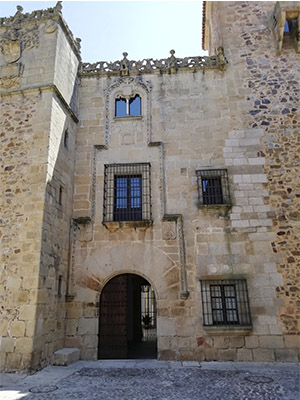
The stunning, ornate Plateresque façade is composed of a stone central body, flanked by two different-sized towers. The left tower bears the Catholic Monarchs’ coat of arms right above the window – the only one to be found in Cáceres, a testament of the close relationship that existed between the Monarchs and the Golfíns. In fact, the Catholic Monarchs stayed here on more than one occasion during their visits to the city. The other coat of arms right below the window corresponds to the Golfíns. It is composed of fleur-de-lys and castles, held up by two naked angles, followed by a mysterious inscription that reads ‘Fer de Fer’.
The Museum of Palacio de los Golfines de Abajo
The Museum of Palacio de los Golfines de Abajo offers visitors a unique chance to learn about ways of aristocratic families in medieval Cáceres.
Take a tour of the sumptuous 2-story palace by starting on the ground floor. Each of the four rooms is decorated with furniture from different centuries. Room 1 showcases the significant influence French art had on the decoration of 19th-century, aristocratic homes in Spain. Room 2 reveals Madrilenian furniture belonging to the last member of the Golfín lineage, Tatiana Pérez de Guzmán el Bueno y Seebacher, who passed away in 2012. Rooms 2 and 4 houses a stunning collection of Flemish art amassed over the centuries, including original tapestries, lamps, consoles and sculptures.
The last room of the ground-floor tour is the Weapons room, one of the oldest and best conserved rooms of the palace. The room provides a fascinating look at the Golfín family genealogy and it includes various portraits of family members.
The ancient stairwell leading up to the first floor is decorated with banners belonging to the families who shaped the Golfín lineage over the course of five hundred years. Once upstairs, the Oratory displays an impressive collection of 16th-century reliquaries, while the Hunting Room showcases a vast collection of hunting trophies and guns. The Parlour is the most intimate space of the palace because this is where the family hosted their closest friends. Lastly, the Documents Room is filled with invaluable historical documents that do not only trace the family’s history but also that of Spain’s.




































































